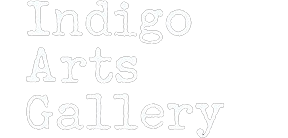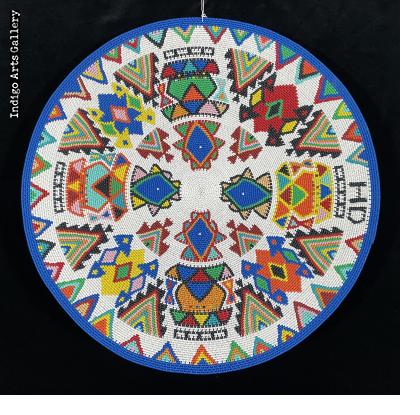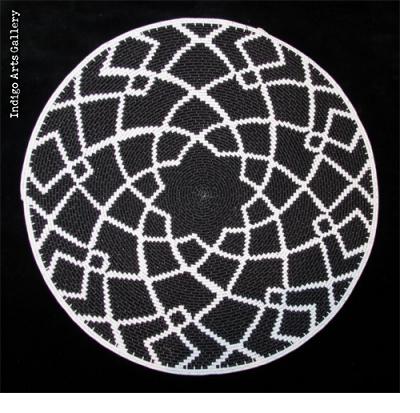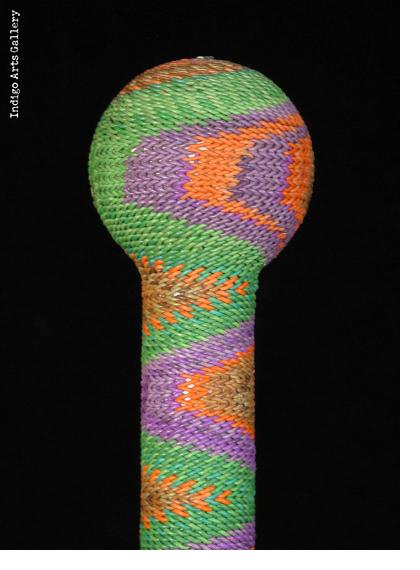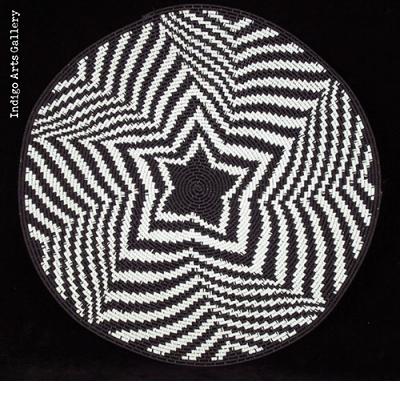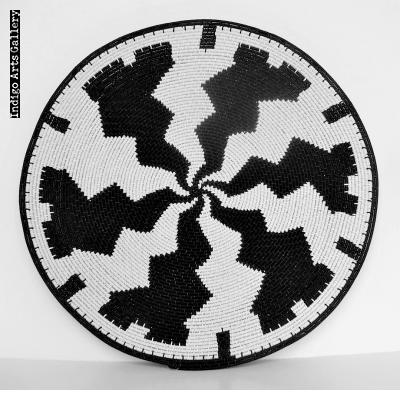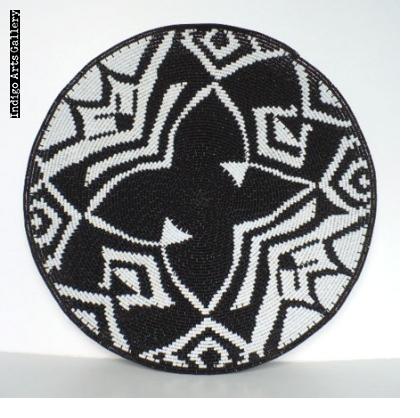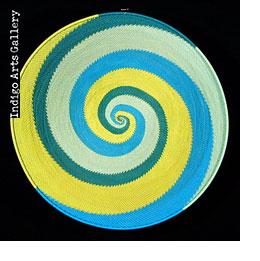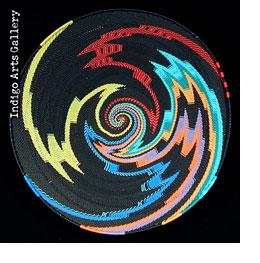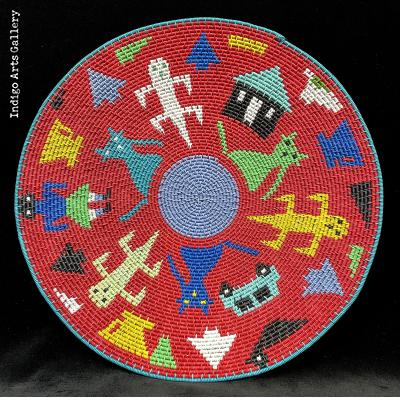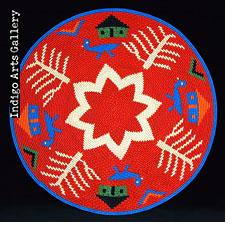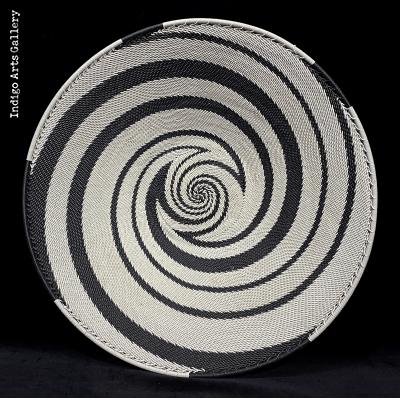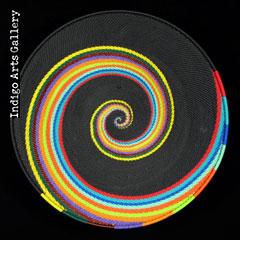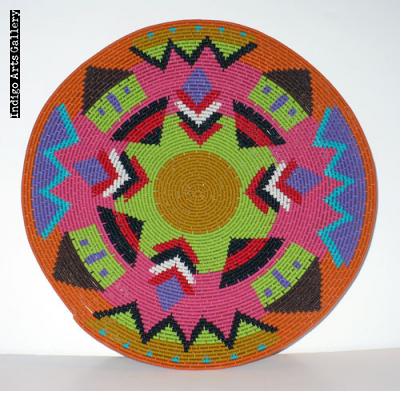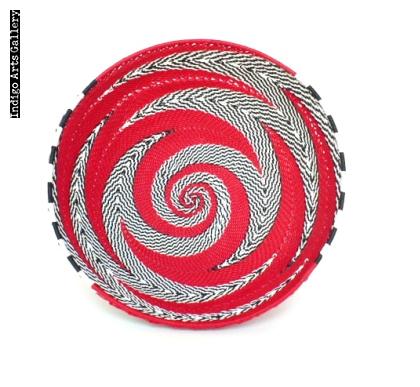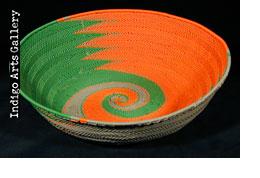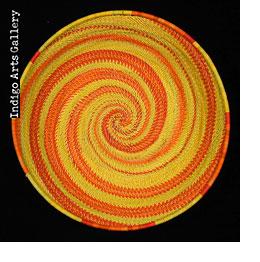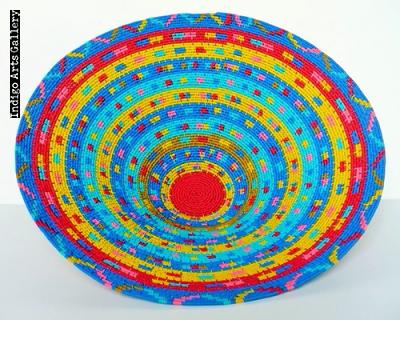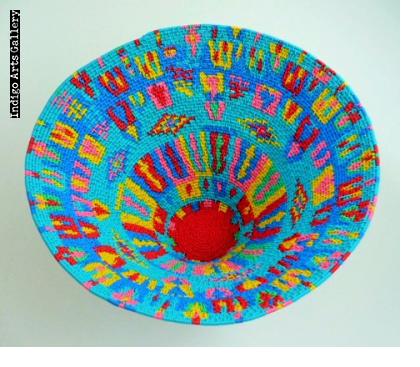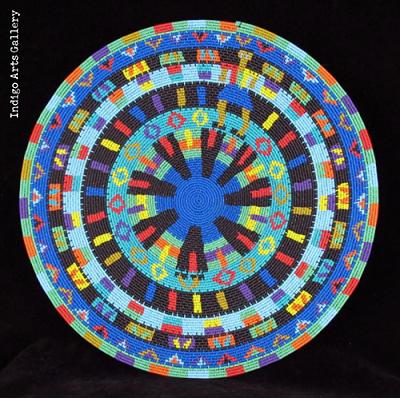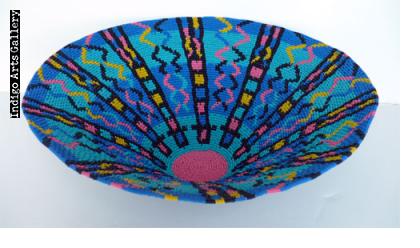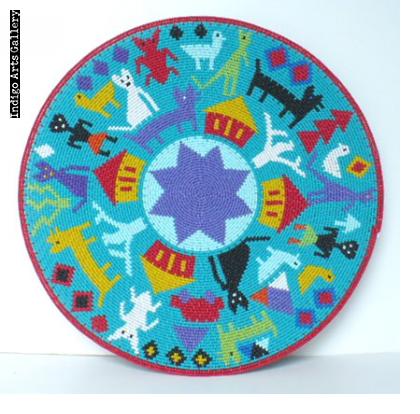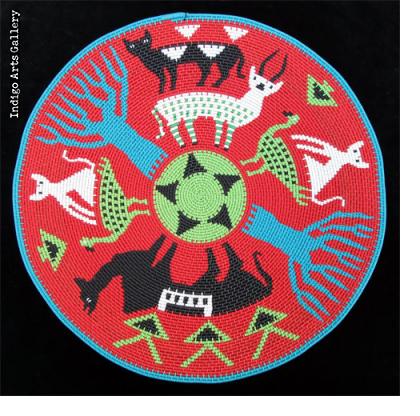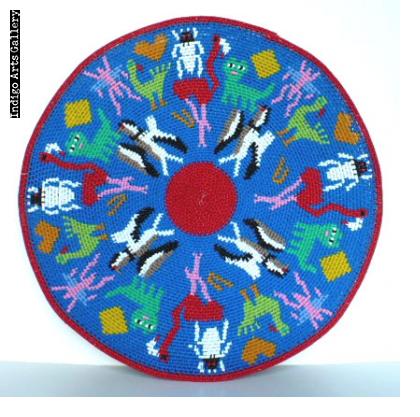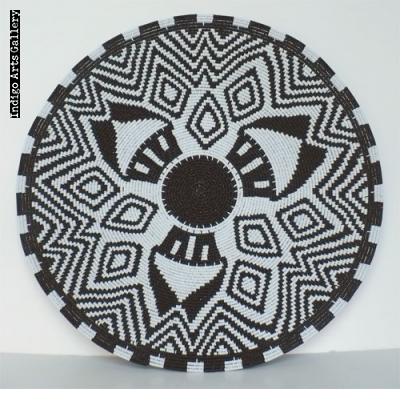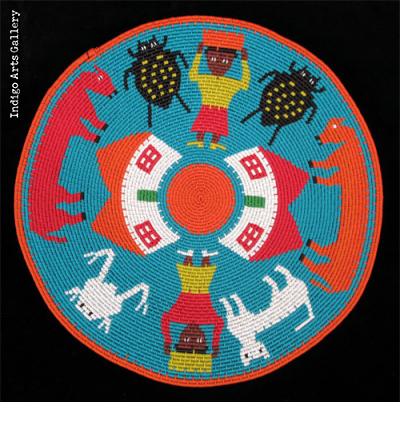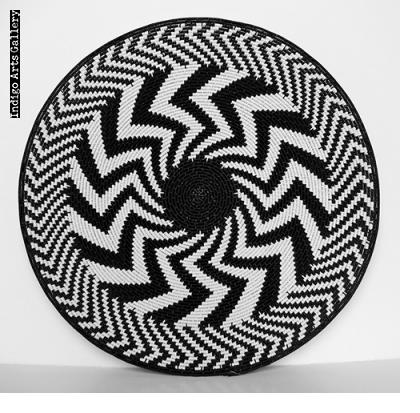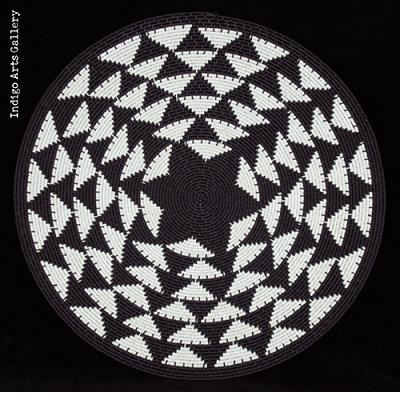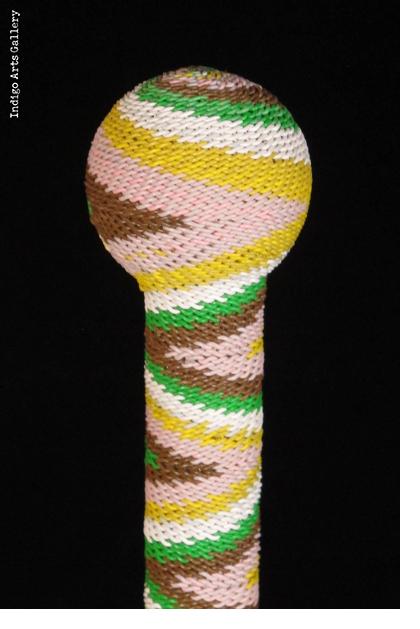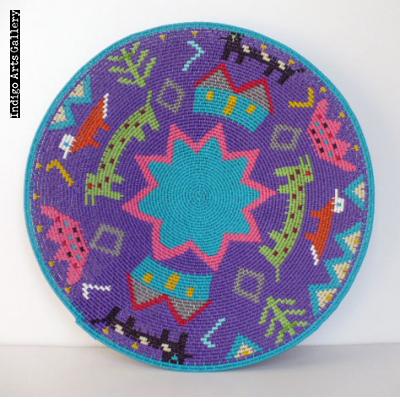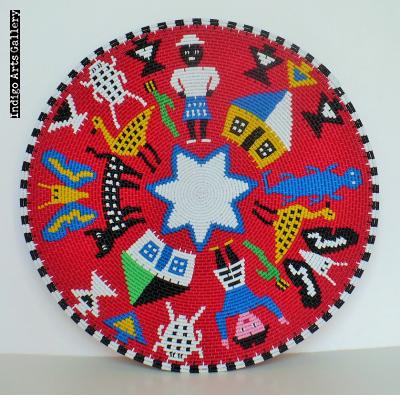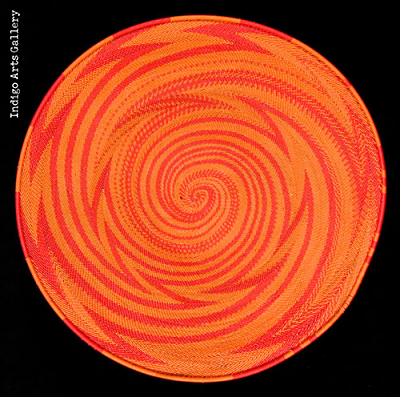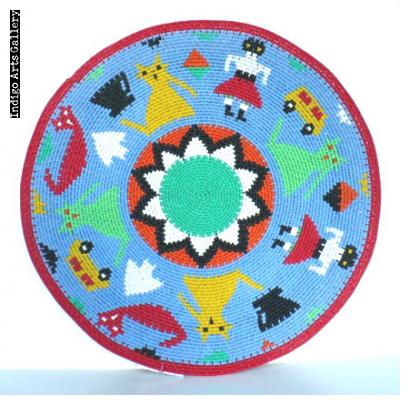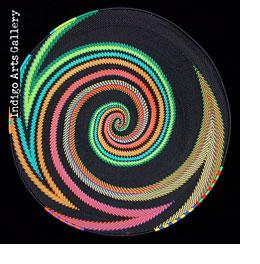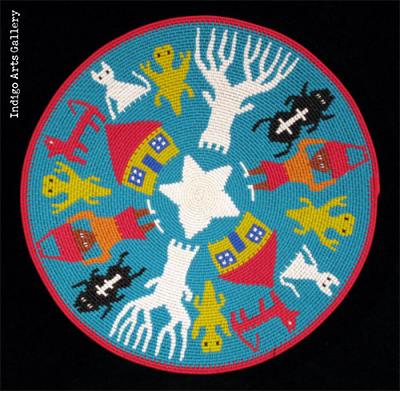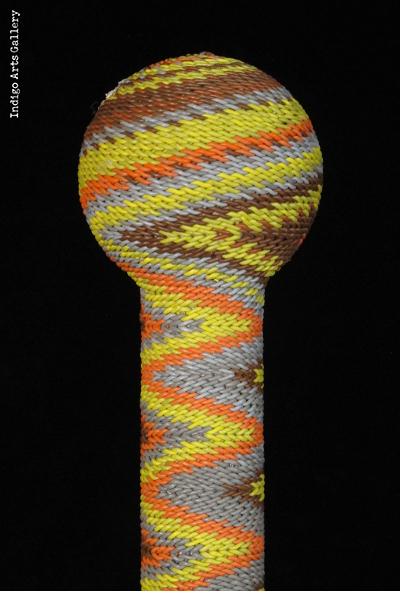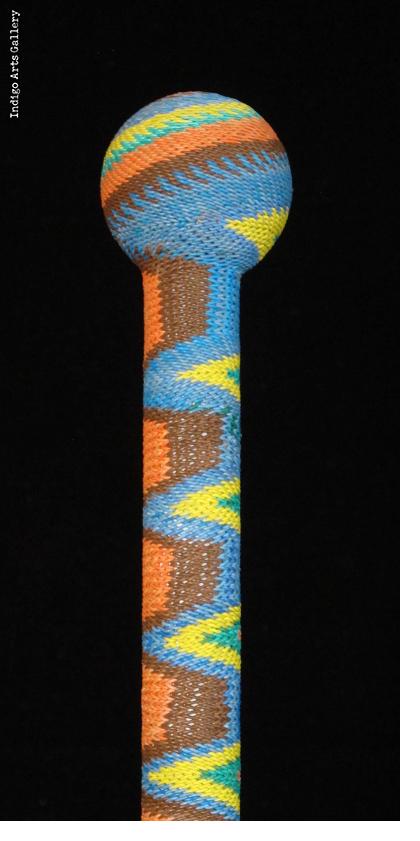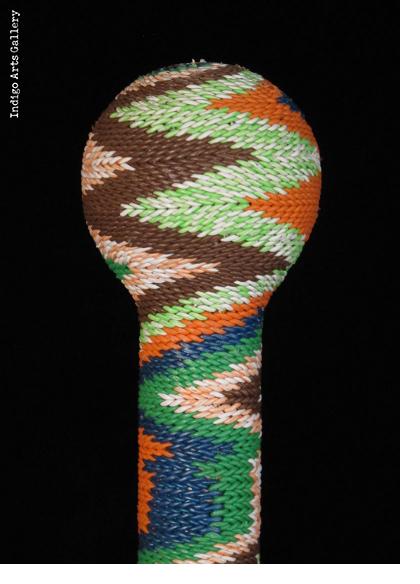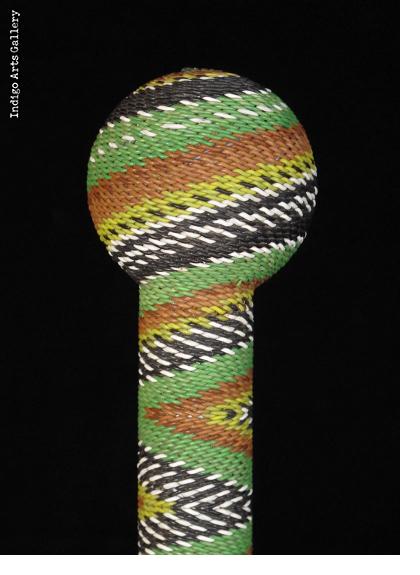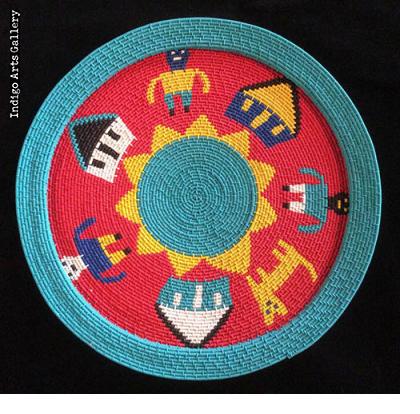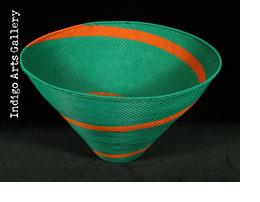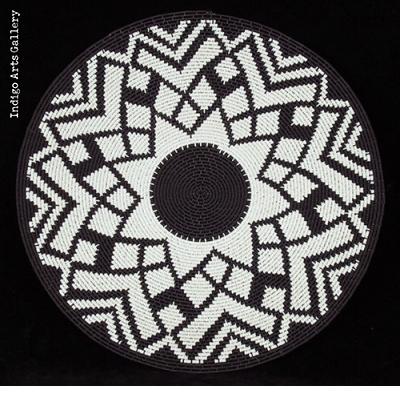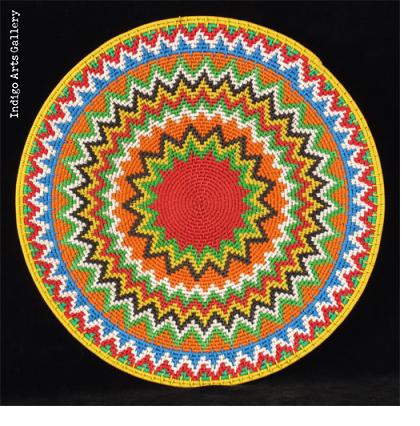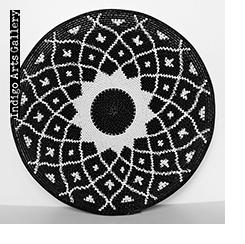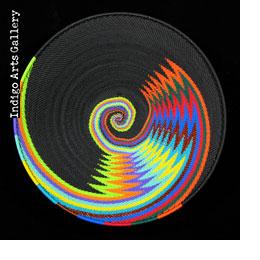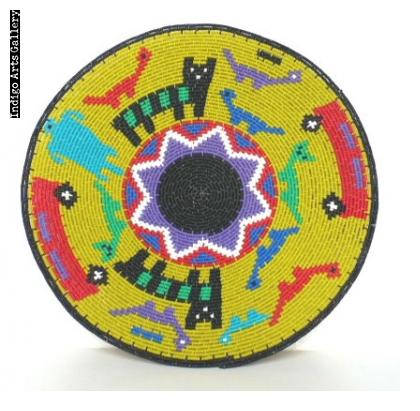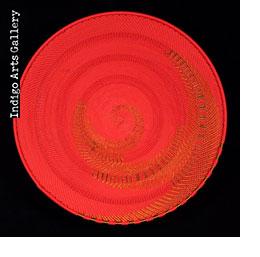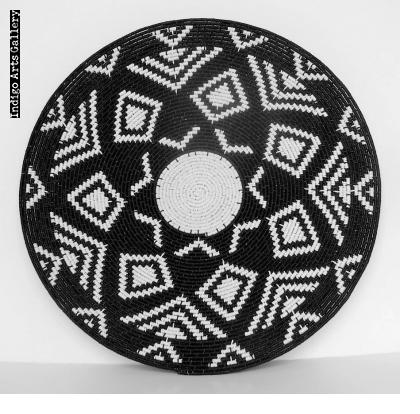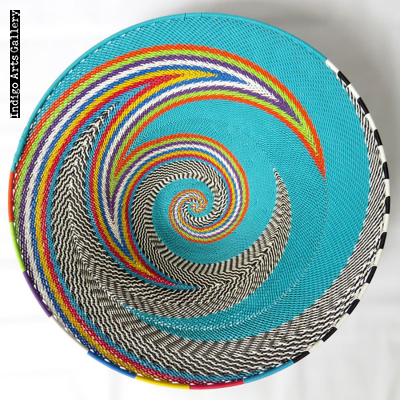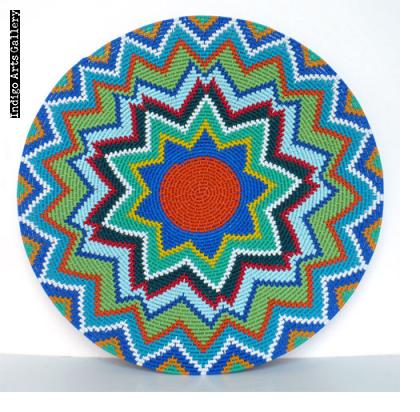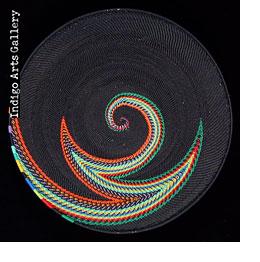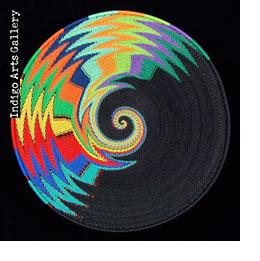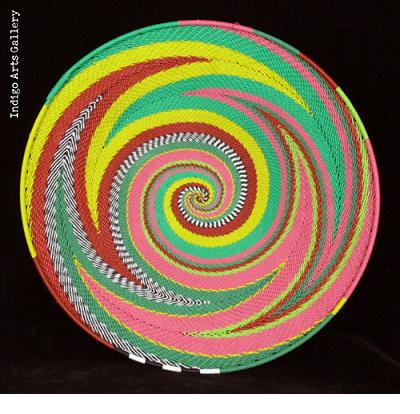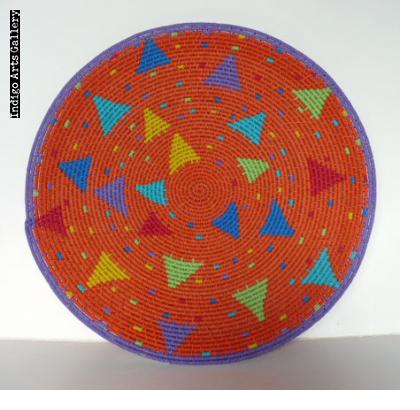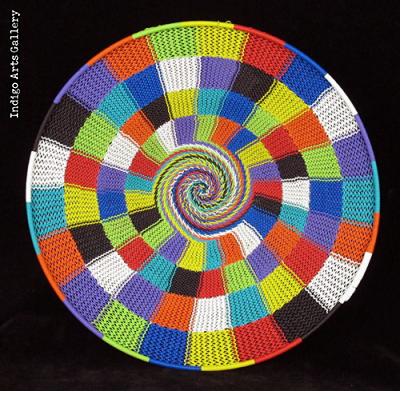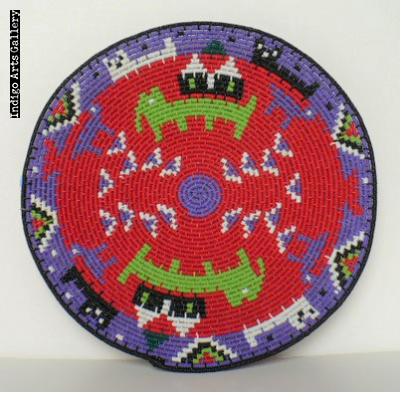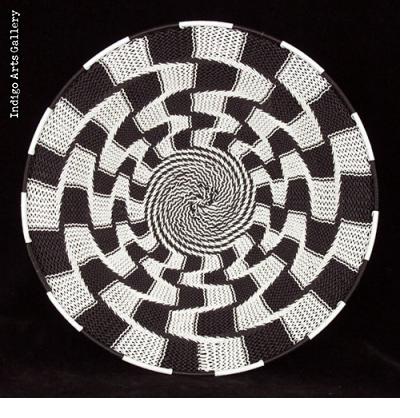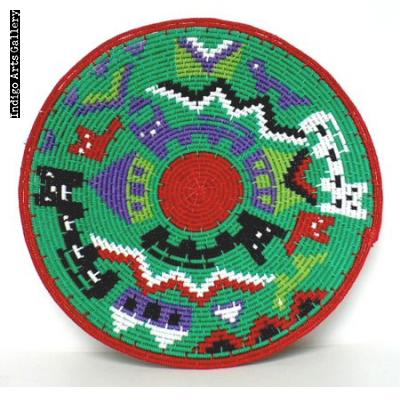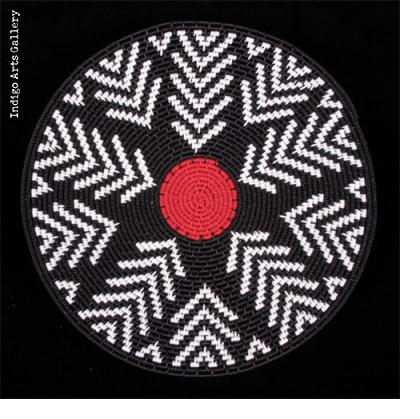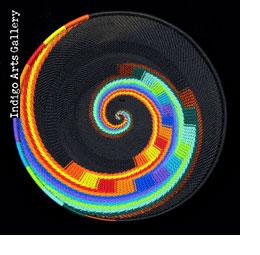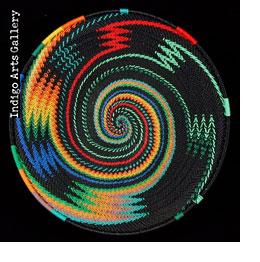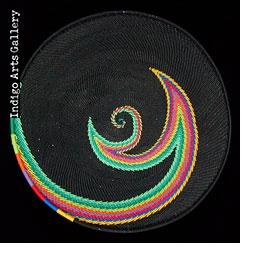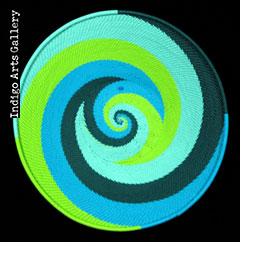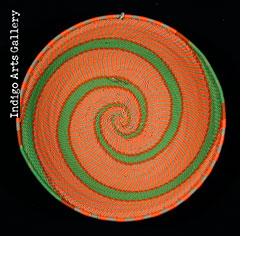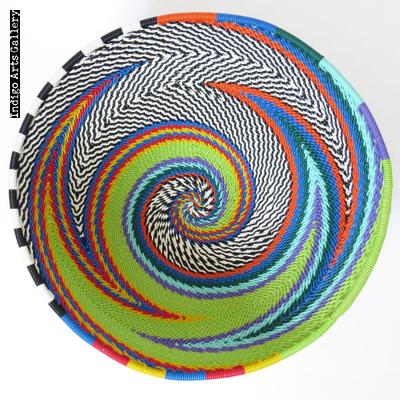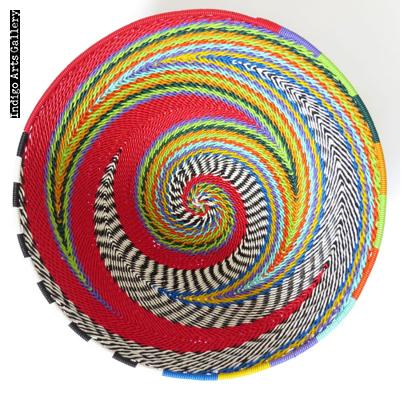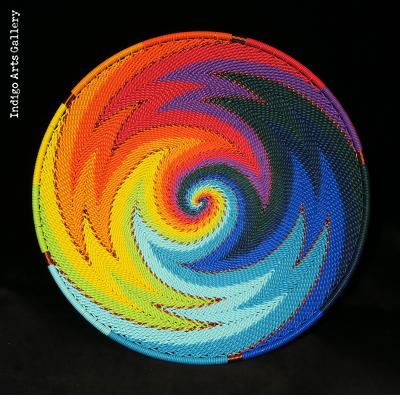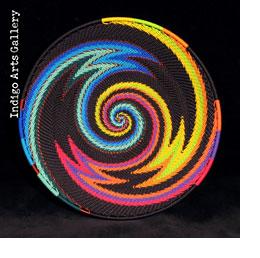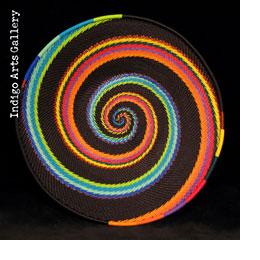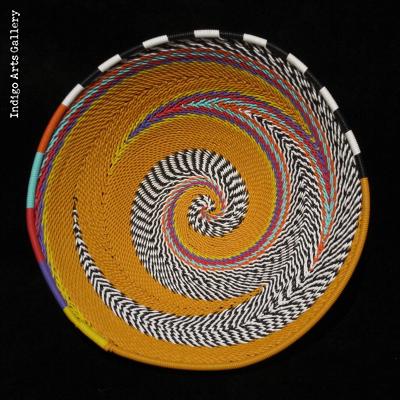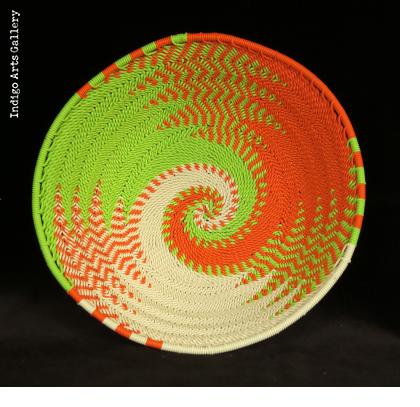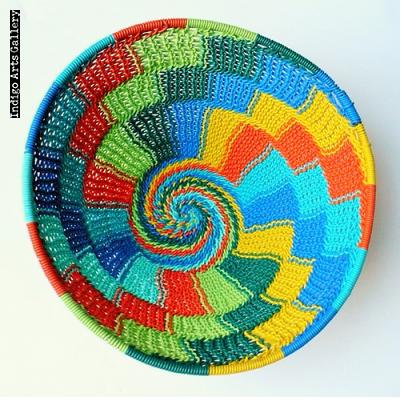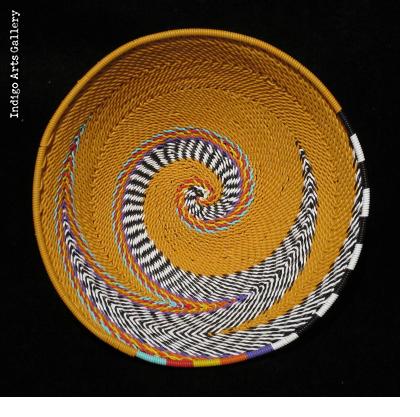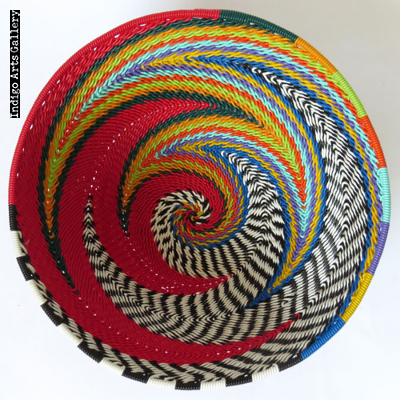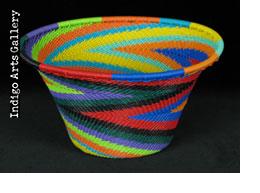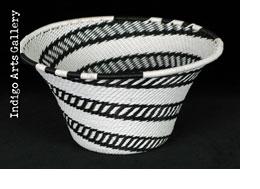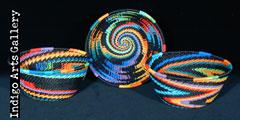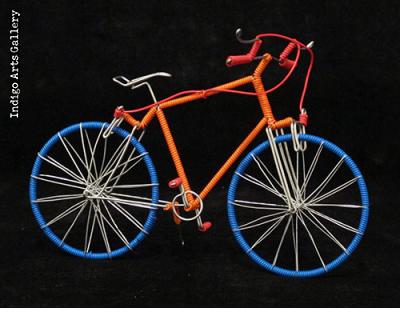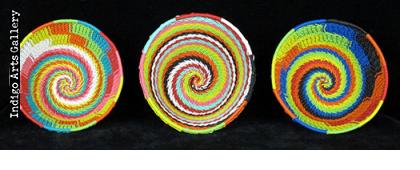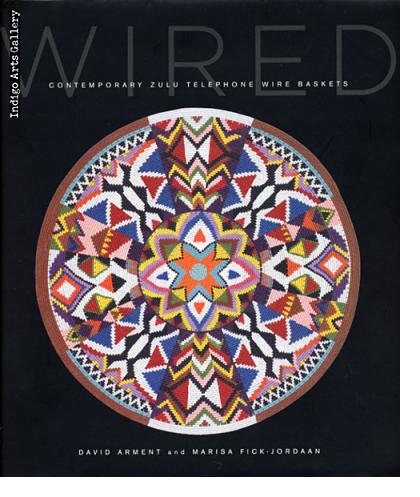For centuries South Africa's Zulu people have been famous for the sturdy and beautiful baskets they weave from grasses and palm leaf. The weaving was so tight that the best ukhamba baskets were actually used to store beer! Today these baskets are still woven in the countryside, but the Zulus living in urban area have invented a new kind of basket, the imbenge basket woven entirely of recycled telephone wire. The baskets are as bright and colorful as the telephone wire, and very sturdy. They are also completely washable! In recent years people in craft cooperatives in the the neighboring nation of Zimbabwe have developed their own distinct style of telephone wire basket, which we are also offering here. These baskets are all one-of-a-kind, and our inventory is constantly changing.
 A museum show from the Museum of International Folk Art in Santa Fe featured these baskets. Read about them in the book Recycled Re-Seen: Folk Art from the Global Scrap Heap by Charlene Cerny and Suzanne Seriff, Abrams/Museum of New Mexico:
A museum show from the Museum of International Folk Art in Santa Fe featured these baskets. Read about them in the book Recycled Re-Seen: Folk Art from the Global Scrap Heap by Charlene Cerny and Suzanne Seriff, Abrams/Museum of New Mexico: The fine, even texture and colors of telephone wire are used in this basket to produce an intricate, swirling design. The techniques and aesthetic of traditional grass basket-weaving have been beautifully adapted by contemporary Zulu artisans to this readly available scrap material.
The fine, even texture and colors of telephone wire are used in this basket to produce an intricate, swirling design. The techniques and aesthetic of traditional grass basket-weaving have been beautifully adapted by contemporary Zulu artisans to this readly available scrap material.
Our recycled products, including telephone-wire baskets, were featured in the March 2005 issue of Sky magazine. The article, Bags, Bottle Caps and Tin Cans: Craftspeople from Around the World Create from Recycled Materials tells the story of our long fascination with people's resourceful use of discarded materials.
In 20024 the Museum of International Folk Art mounted a major exhibitjon on this art form:
iNgqikithi yokuPhica / Weaving Meanings: Telephone Wire Art from South Africa
(November 17, 2024 - March 6, 2026)
The spectacular art of telephone wire weaving is the subject of iNgqikithi yokuPhica / Weaving Meanings: Telephone Wire Art from South Africa at the Museum of International Folk Art in Santa Fe, New Mexico. Foregrounding artists’ voices, Weaving Meanings shares histories of the wire medium in South Africa, from the 16th century uses as currency to the dazzling artworks wire weavers create today. From beer pot lids (izimbenge) to platters and plates, from vessels to sculptural assemblages, works in the exhibition speak to the continued development and significance of this artistic tradition, both locally in KwaZulu-Natal and to global markets and audiences.
Weaving Meanings features historical items alongside contemporary works of art, demonstrating individual and community-based ways of making and knowing. Curated in consultation with Indigenous Knowledge experts in broader Nguni and specific Zulu cultures, this exhibition sheds new light on this artistic medium, highlighting the experiences of the artists themselves through videos featuring interviews and the process of creating wirework.
The exhibition coincided with the publication of a second edition of the essential work on South African telephone wire art:
Wired: Contemporary Zulu Telephone Wire Baskets
